Kitchen lighting is an essential aspect of any home’s interior design, as it can significantly impact the functionality and ambiance of the space. The right lighting can make a small kitchen feel more spacious, highlight specific areas, and create a warm and inviting atmosphere. With the advancement of technology, there are now numerous lighting options available that can cater to various preferences and needs.
One of the most popular kitchen lighting ideas is to install recessed lighting. This type of lighting provides a clean and modern look, as the fixtures are installed directly into the ceiling, creating a sleek and unobtrusive appearance. Recessed lighting is also highly versatile, as it can be used to highlight specific areas such as the kitchen island or countertops, or to provide overall illumination to the entire space.
Another popular option is pendant lighting, which can add a touch of elegance and sophistication to any kitchen. Pendant lights are available in various sizes, shapes, and styles, making it easy to find the perfect fit for any kitchen design. They can be installed above the kitchen island or sink, providing both functional and decorative lighting. Overall, there are numerous kitchen lighting ideas available that can elevate the look and feel of any kitchen.
What Type of Lighting Is Best for A Kitchen?
Kitchen lighting is an essential part of any home. It not only illuminates the space but also sets the mood and ambiance of the room. Proper lighting can enhance the functionality of the kitchen and make it a more comfortable and inviting space.
One of the most important aspects of kitchen lighting is task lighting. Task lighting is designed to provide adequate illumination for specific work areas, such as the countertops, sink, and stove. This type of lighting is essential for preparing food, cooking, and cleaning up.
Another important aspect of kitchen lighting is ambient lighting. Ambient lighting provides overall illumination for the entire room. It helps your galley kitchen look bigger. It can be achieved through the use of ceiling fixtures, wall sconces, or recessed lighting. Ambient lighting can help create a warm and inviting atmosphere in the kitchen.
Current Trending Types of Kitchen Lighting
There are several types of kitchen lighting to consider when designing your kitchen. Some of the most common types include:
- Pendant lighting: Pendant lighting is a popular choice for kitchen islands and breakfast bars. It provides a focused beam of light that can be adjusted to suit your needs.
- Under cabinet lighting: Under cabinet lighting is an excellent option for task lighting. It illuminates the countertops and workspaces, making it easier to prepare food and cook.
- Recessed lighting: Recessed lighting is a versatile option for both task and ambient lighting. It can be used to highlight specific areas of the kitchen, such as the sink or stove.
- Chandeliers: Chandeliers are a stylish option for ambient lighting in the kitchen. They can add a touch of elegance and sophistication to the space.
In conclusion, understanding kitchen lighting is essential for creating a functional and inviting space. By considering the importance of task lighting and the various types of lighting available, you can design a kitchen that meets your specific needs and preferences.
Trending Kitchen Lighting Ideas
Layered Lighting

Layered lighting is the most important aspect of kitchen lighting. It involves using multiple light sources to create a balance of light throughout the space. A combination of ambient, task, and accent lighting can be used to create a functional and aesthetically pleasing kitchen.

Photo by Wood Wise Design & Remodeling – Browse kitchen photos
- Ambient Lighting: This provides overall illumination and should be bright enough to light the entire kitchen. It can be achieved through ceiling fixtures, chandeliers, or recessed lighting.
- Task Lighting: This is used to provide focused light for specific tasks such as cooking, chopping, or reading recipes. It can be achieved through under-cabinet lighting, pendant lighting, or track lighting.
- Accent Lighting: This is used to highlight specific areas or features in the kitchen such as artwork, decorative pieces, or architectural details. It can be achieved through recessed lighting or directional spotlights.
Under-Cabinet Lighting
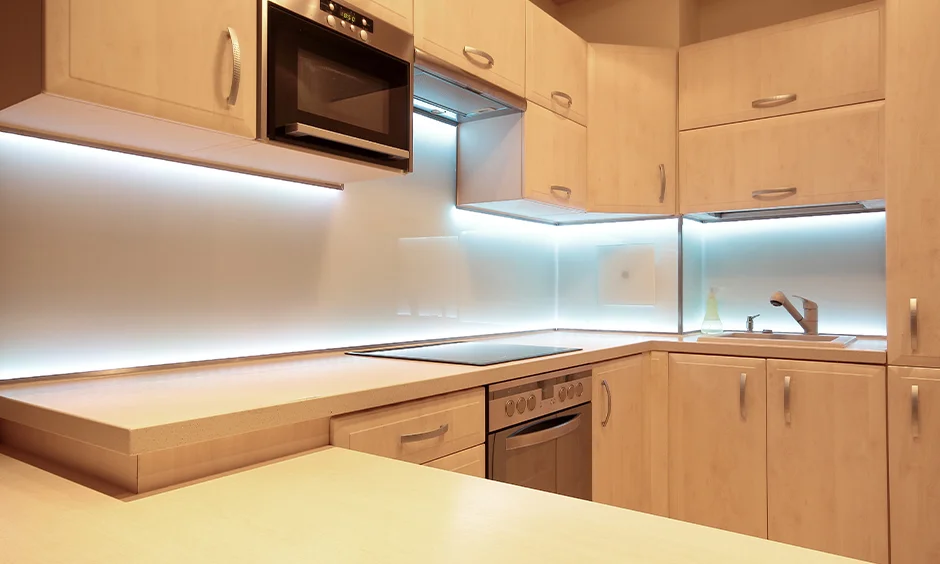
Under-cabinet lighting is a popular choice for task lighting in the kitchen. It provides focused light on the countertop and helps to eliminate shadows. LED strip lights are a common option for under-cabinet lighting as they are energy-efficient and easy to install.
Pendant Lighting
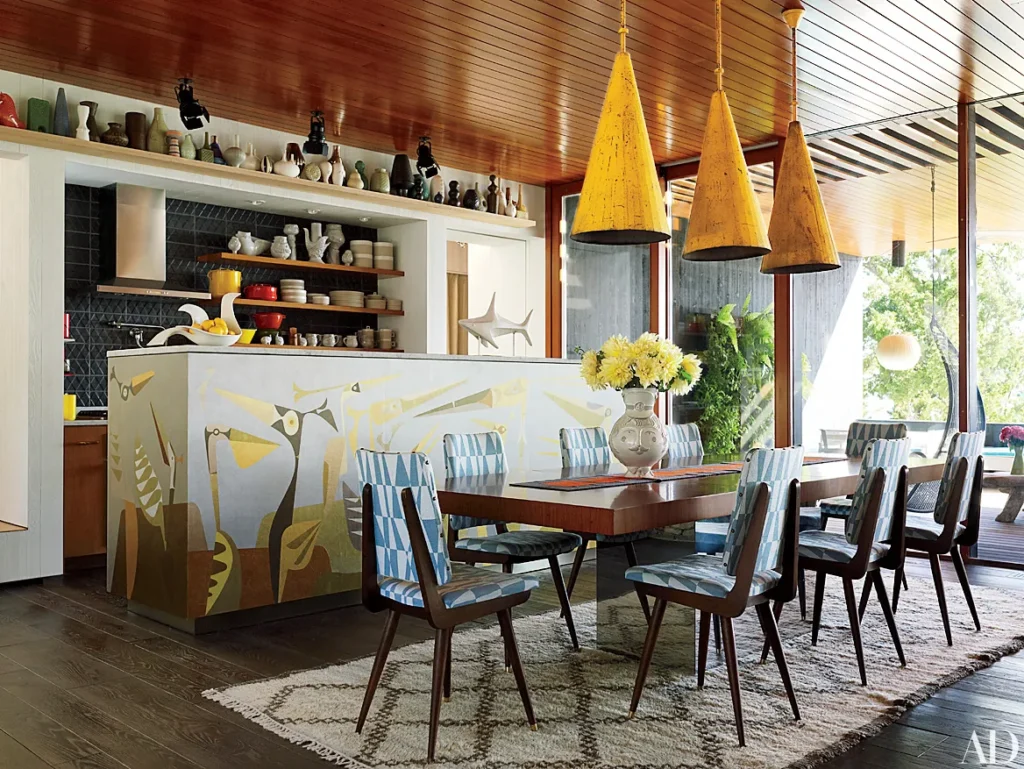
Pendant lighting is a stylish and functional option for task lighting in the kitchen. It can be used over an island or a dining table to provide focused light. Pendant lights come in a variety of styles, sizes, and materials, making it easy to find one that fits your kitchen’s aesthetic.
Recessed Lighting
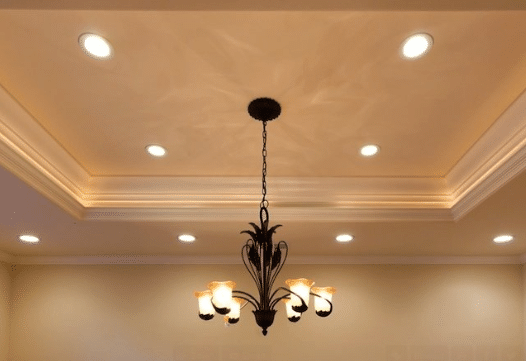
Recessed lighting is a versatile option for ambient and accent lighting in the kitchen. It can be used to provide overall illumination or to highlight specific areas or features. Recessed lighting is discreet and can be used to create a clean and modern look in the kitchen.
Track Lighting
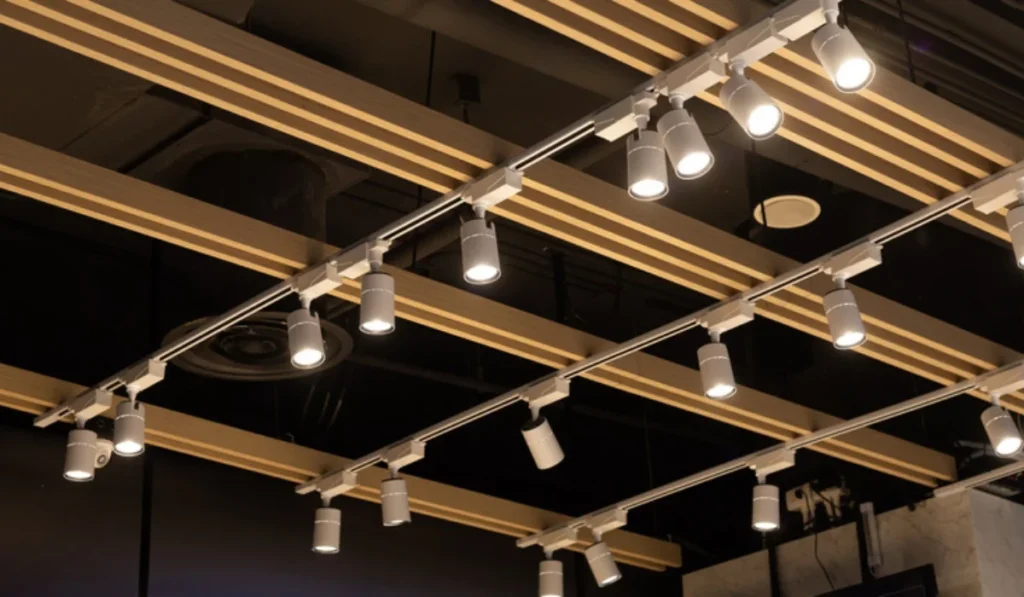
Track lighting is a flexible option for task and accent lighting in the kitchen. It consists of a track that can be mounted on the ceiling or wall and adjustable light fixtures that can be moved to highlight specific areas. Track lighting is easy to install and can be used to create a customized lighting solution in the kitchen.
In conclusion, using a combination of layered lighting, under-cabinet lighting, pendant lighting, recessed lighting, and track lighting can help to create a functional and aesthetically pleasing kitchen.
Choosing the Right Lighting
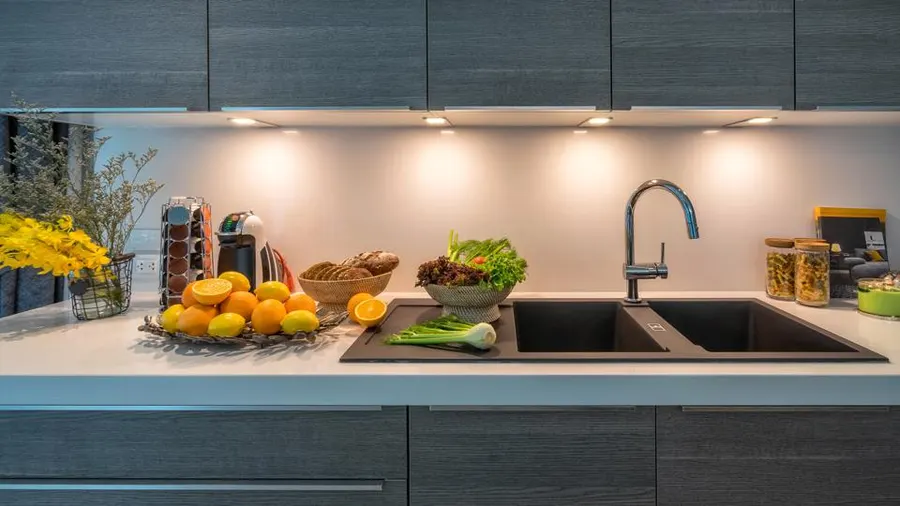
When it comes to choosing the right lighting for your kitchen, there are a few things to consider that can make a big difference in both the functionality and aesthetic of the space. Here are some key factors to keep in mind:
Consider Your Kitchen’s Layout
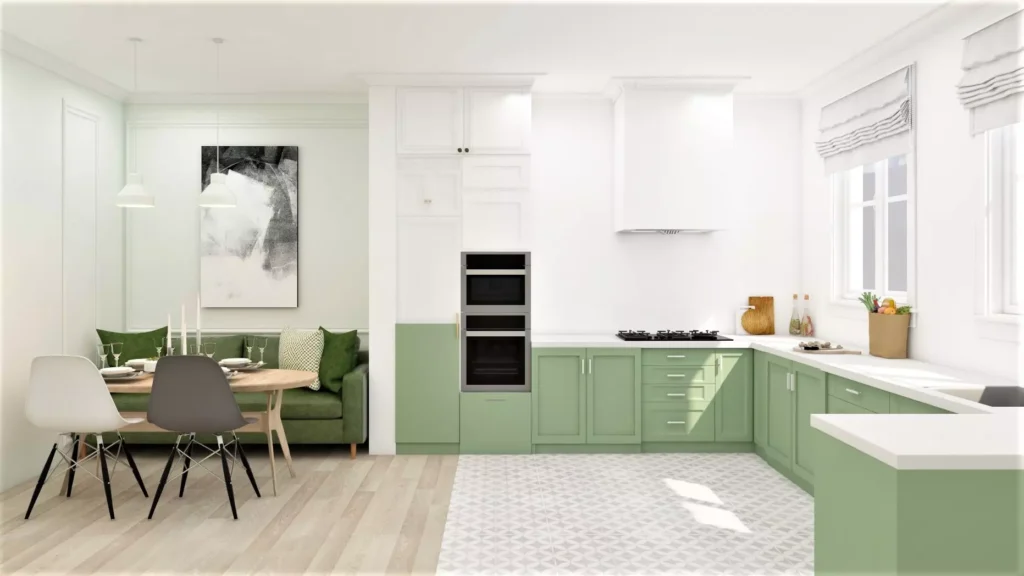
The layout of your kitchen can play a significant role in determining the type of lighting you need. For example, if you have an open-concept kitchen that flows into a dining or living area, you may want to consider using pendant lights or chandeliers to create a cohesive look between the spaces. Alternatively, if you have a smaller kitchen with limited natural light, you may want to opt for under-cabinet lighting to brighten up the work surfaces and make the space feel larger.
Related: Kitchen Table Lamp Ideas to Set Perfect Mood
Match Your Kitchen’s Style
Another important factor to consider is the style of your kitchen. If you have a modern kitchen with sleek, minimalistic design elements, you may want to choose lighting fixtures that have a similar aesthetic. On the other hand, if you have a more traditional kitchen with ornate cabinetry and decorative details, you may want to choose lighting fixtures that have a more classic or vintage feel.
Energy Efficiency
Finally, it’s important to consider the energy efficiency of your lighting choices. LED lights are a great option for kitchen lighting, as they use significantly less energy than traditional incandescent bulbs and can last up to 25 times longer. Additionally, installing dimmer switches can help you save energy and create a more versatile lighting scheme that can be adjusted to suit different tasks and moods.
By taking these factors into account, you can choose the right lighting for your kitchen that will not only look great but also enhance the functionality of the space.
Installation Tips
DIY vs Professional Installation
When it comes to installing kitchen lighting, homeowners may consider doing it themselves or hiring a professional. DIY installation can save money, but it requires some electrical knowledge and experience. If a homeowner is not confident in their abilities or does not have the necessary tools, it is best to hire a professional.
Professional installation ensures that the job is done correctly and safely. Electricians have the necessary skills and experience to install lighting fixtures, and they can also identify any potential electrical problems that may arise. However, professional installation can be expensive, and homeowners should get multiple quotes before hiring an electrician.
Safety Tips
Whether a homeowner chooses to do the installation themselves or hire a professional, safety should always be a top priority. Here are some safety tips to keep in mind:
- Turn off the power: Before beginning any electrical work, turn off the power to the area where the lighting will be installed. This can be done by turning off the circuit breaker or removing the fuse.
- Use the right tools: Use tools that are specifically designed for electrical work, and make sure they are in good condition.
- Check the wiring: Before installing the new lighting, check the wiring to make sure it is in good condition. If the wiring is damaged, it should be replaced before installing the new lighting.
- Follow the instructions: Always follow the manufacturer’s instructions when installing the lighting. This will ensure that the fixture is installed correctly and safely.
- Test the lighting: After the installation is complete, test the lighting to make sure it is working properly. If there are any issues, turn off the power and check the wiring.
By following these installation tips, homeowners can ensure that their kitchen lighting is installed safely and correctly.
Conclusion
In conclusion, choosing the right kitchen lighting can greatly enhance the functionality, style, and ambiance of any kitchen. With the right combination of task, ambient, and accent lighting, homeowners can create a space that is both practical and aesthetically pleasing.
When selecting kitchen lighting, it is important to consider factors such as the size and layout of the kitchen, the color scheme, the style of the cabinets and countertops, and the overall design aesthetic. Different types of lighting fixtures, such as pendant lights, chandeliers, track lighting, and recessed lighting, can be used to create different effects and highlight different areas of the kitchen.
It is also important to consider the type of bulbs used in the lighting fixtures. LED bulbs are a popular choice, as they are energy-efficient, long-lasting, and emit less heat than traditional incandescent bulbs. Additionally, dimmer switches can be installed to allow for adjustable lighting levels and create a more versatile and customizable environment.
Overall, with careful consideration and planning, homeowners can create a kitchen space that is not only functional and efficient, but also stylish and inviting.